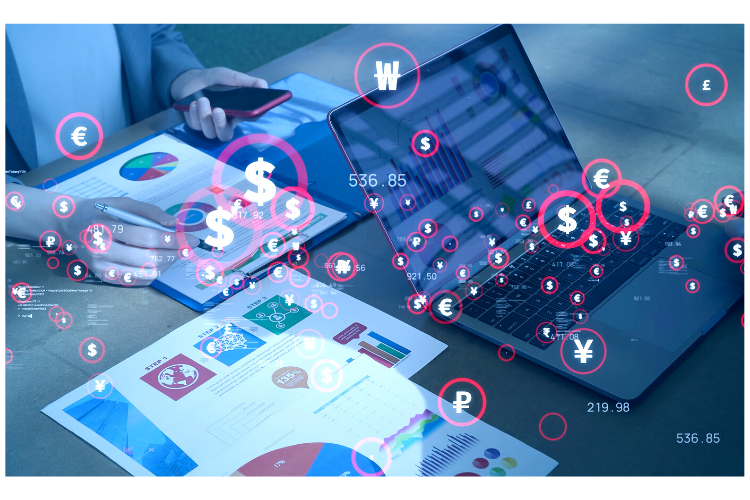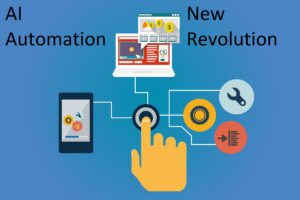Every industry in the global economy benefits from artificial intelligence (AI) and big data. It was only a matter of time until banks, financial institutions, and wealth management organizations leveraged this tech to gain a competitive edge.
AI and big data have numerous applications in the financial sector. The industry will become more digitally data-driven as more banks and financial services companies adopt AI and big data solutions.
5 Big Data and AI Applications in the Financial Industry
Big data and AI may seem like industry buzzwords, but they’re quite simple. Big data solutions allow companies to sort raw information into actionable insights. AI can automate routine, repetitive or monotonous tasks to free up employees to handle more complex projects.
“AI-powered and big data applications can help financial institutions, banks, wealth management professionals, and consumers function more efficiently and effectively.”
Here are examples of big data and AI applications that will transform the finance industry in the coming years.
1. Fraud Detection
Financial institutions manage a lot of data, which is only increasing as the world becomes more digital and the number of customers continues to rise. Fraud detection is a top priority in the financial sector. Human employees cannot sift through high volumes of information to find anomalies, but machine learning (ML) and AI can do just that.
AI-based anomaly detection can help financial companies determine incidents of fraud for their customers. For example, Wells Fargo uses FICO software to fight against deception in real time, protecting consumers and businesses. The well-known bank even won the
FICO Choice 2022 Industry Vanguard Award for using ML and AI for fraud detection processes.
2. Conversational Chatbots
Conversational AI describes solutions that use natural language processing (NLP), which allows virtual bots to engage in real-time, humanlike conversations with customers. Companies with labor shortages can use AI chatbots to handle basic customer service tasks, allowing human employees to focus on more meaningful assignments.
“Conversational chatbots are becoming increasingly popular in the financial industry, especially as demand for quick, helpful customer service responses rises.”
One prime example of AI chatbots in the financial sector is Bank of America’s Erica. Erica is an AI-powered bot within the bank’s mobile application. The virtual financial assistant can answer questions about bank accounts, credit card applications, and more. Users can avoid calling customer service for many questions, as Erica can answer them efficiently.
3. Personalized Insights
Another application of big data analytics and AI is the ability for banks to personalize customers’ financial management and banking experiences. Competition is fierce — the institutions that offer customers personalized insights will often outperform others.
Although banks know how valuable personalized information is for customers, only 16% have standard protocols to develop algorithms for it, according to research from McKinsey.
4. Predictive Analytics
Predictive analytics is a beneficial big data application banks can use. These solutions make future predictions that come in handy for customers and businesses. The financial information companies collect would be rendered useless without analytics solutions, as it’s too complex and voluminous for employees to understand.
Predictive analytics allows businesses to understand market trends better, anticipate future changes in the financial industry, and determine how to serve customers best. It can take over some of the work human employees do, allowing them to focus on more meaningful projects for their organizations.
5. Regulatory Compliance Management
Banks must comply with many regulatory requirements. Compliance management is a challenging aspect of the financial industry, but important nonetheless. For example, banks must follow anti-money laundering (AML) regulations, which help mitigate suspicious or fraudulent activity.
Companies are turning to AI and big data solutions to assist with regulatory compliance management processes. These systems allow banks and other financial institutions to streamline their compliance processes by reducing human error and automating decision-making.
These five applications only provide a glimpse into the changing financial sector. Some other basic applications include:
- Managing credit risk
- Optimizing trading strategies
- Supporting algorithmic trading
- Underwriting and managing claims
Because the financial industry is vast, there are seemingly endless opportunities for companies to leverage AI and big data solutions nowadays.
Financial Companies: Continue Leveraging the Power of Big Data and AI
Like many other sectors in the economy, the banking and financial services industry is becoming more reliant on digital technologies, and big data and AI are no exception.
“Banks and financial organizations are upgrading their legacy systems to more advanced, high-tech solutions to serve customers better, drive productivity and boost efficiency.”
Now is the time for banks, wealth management professionals, and other financial-related companies to leverage AI, ML, and big data to keep up with their competitors and customers. It’ll be interesting to see how AI and big data continue changing the financial services landscape in 2023 and beyond. Artificial intelligence is constantly advancing and transforming industries, and companies would be wise to keep up with the changes.










